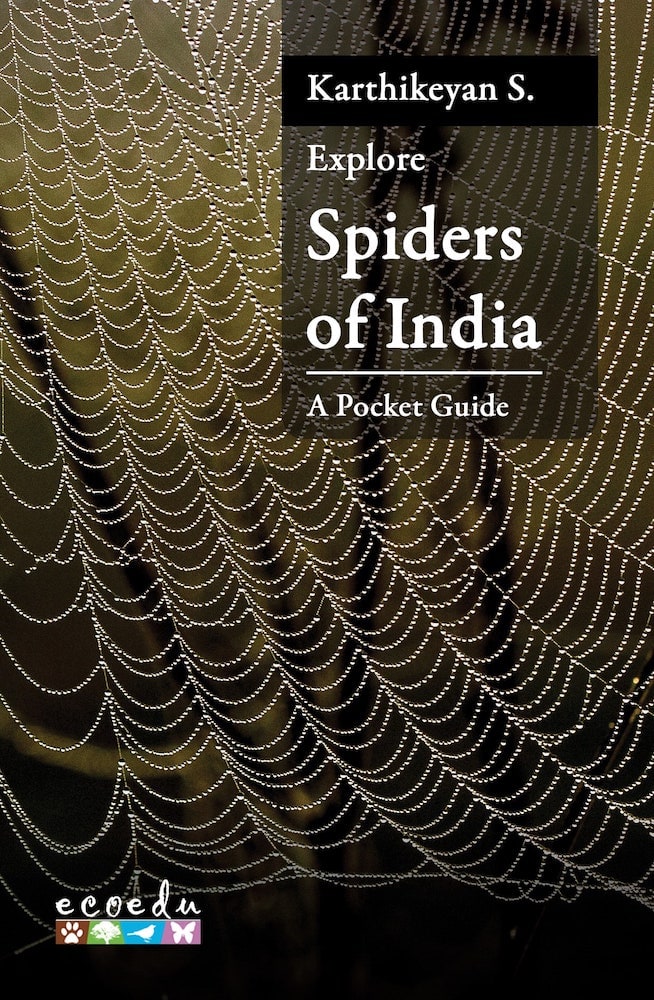Book review: Explore Spiders of India: A Pocket Guide by Karthikeyan S.
Published by EcoEdu. 200 pages, Pocket Size, Full colour, Paperback: ₹400.00.
Spiders have always captured popular imagination as depicted by the famous Spiderman or as a terrifying monster like Aragog from Harry Potter. But leaving aside this perception, spiders play a crucial role in ecosystems they inhabit. Spiders are arachnids and belong to the same class as scorpions, ticks/mites, whip scorpions etc. Spiders are predators and occur in all sizes, hunt a wide range of prey from tiny flies to small mammals, and are prey to other animals. They are ubiquitous and occur in all habitats ranging from forests to urban apartments but most things about them have remained a mystery. Existing literature and information only catered to the niched audience of scientists and serious arachnophiles. Until now.
Recently, a book titled ‘Explore Spiders of India: A Pocket Guide’ by Karthikeyan S. published by EcoEdu was released. This field guide is part of the Discover Series of Pocket Guides with the intent to enable easy identification. As with their previous books, this is a perfect pocket-sized guidebook that can be easily carried in the field. This guide is a testimony to the spider diversity in India and a perfect companion to students, naturalists, and budding arachnologists who would like to know more about spiders in general and explore the spider diversity found in India. It is an attempt to bridge the gap between fundamental and introductory scientific works and the sparse popular literature on this subject.
The book covers more than 100 species belonging to 20 families of spiders (listed in alphabetical order) with clear macro photographs of species along with colourful illustrations about their habitats, activity, and relative body size. What particularly caught my eye was that the book also provides information on the eye positions of spiders belonging to different families! Karthikeyan provides simple descriptions to encourage readers to easily identify spiders in the field without collecting them and encourages his readers to specifically observe behaviour unique to a spider species, genus, or family.
Overall, Karthikeyan through this book aims to spur an interest in people about spiders and sheds light on their secretive world. For arachnophiles and nature enthusiasts alike, this book should be a part of your collection.
The book is available on the EcoEdu website.


 CI is a non-profit, non-commercial portal that aims to facilitate wildlife and nature conservation by providing reliable information and the tools needed to campaign effectively.
CI is a non-profit, non-commercial portal that aims to facilitate wildlife and nature conservation by providing reliable information and the tools needed to campaign effectively.